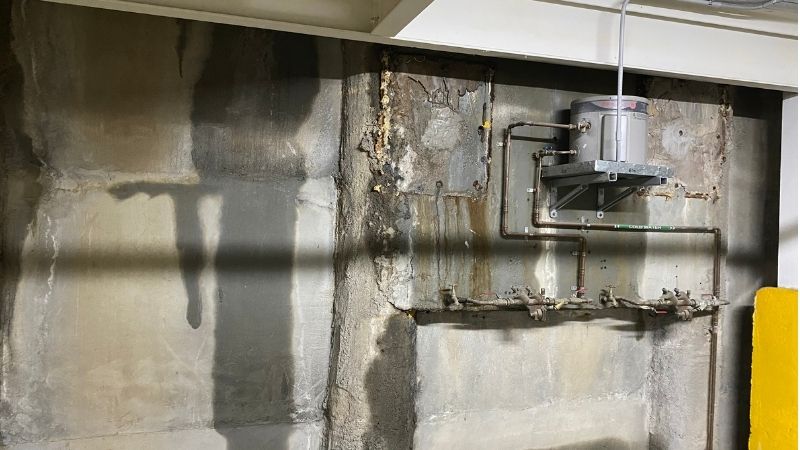
There are many reasons your foundation walls may develop cracks and water damage issues. It can be the shifting of earth that causes your property to move or settle rock pockets in the walls that let water enter your basement over time. No matter the reason, one thing is clear: cracks on the outside or inside your foundation can be a significant issue if left untreated.
However, we have noticed a lot of homeowners struggling to figure out the best way to make such concrete repairs. This blog will look at the primary difference between using an epoxy injection method and the polyurethane injection – the two most common methods for repairing concrete cracks.
Polyurethane Crack Injection
Ideally, polyurethane injections can fix non-structural cracks like diagonal and vertical ones less than a quarter-inch wide. You can apply these injections by either surface port or low-pressure or at high pressure (anywhere between 1500 – 3200 psi).

Low-pressure injections often involve using surface-mounted injection ports to help insert polyurethane into the cracks. However, high-pressure injections use an electric injection pump to help you fill any voids in the wall using activated polyurethane. The material fills gaps through the wall’s entire thickness and expands 5 to 10 times its original volume. It effectively helps create a waterproof, airtight seal. The flushing process allows the material to stick to the wall efficiently.
Epoxy Crack Injection
Epoxy injections can also be applied using a low-pressure injection. It works best on any horizontal crack wider than a quarter of an inch. Such cracks indicate a potential structural issue that requires the additional strength of epoxy. Unlike polyurethane, epoxy injections do not expand and will not become flexible. It fuses your crack back together, forming a much greater bond than your foundation wall.
However, you must carefully consider your crack’s characteristics and both injection methods to dictate what technique to use. The best way to determine the right course of action is to hire an experienced concrete repair expert.
A professional can help you save a lot of time on repairs while reducing the risk of your repairs failing prematurely.



